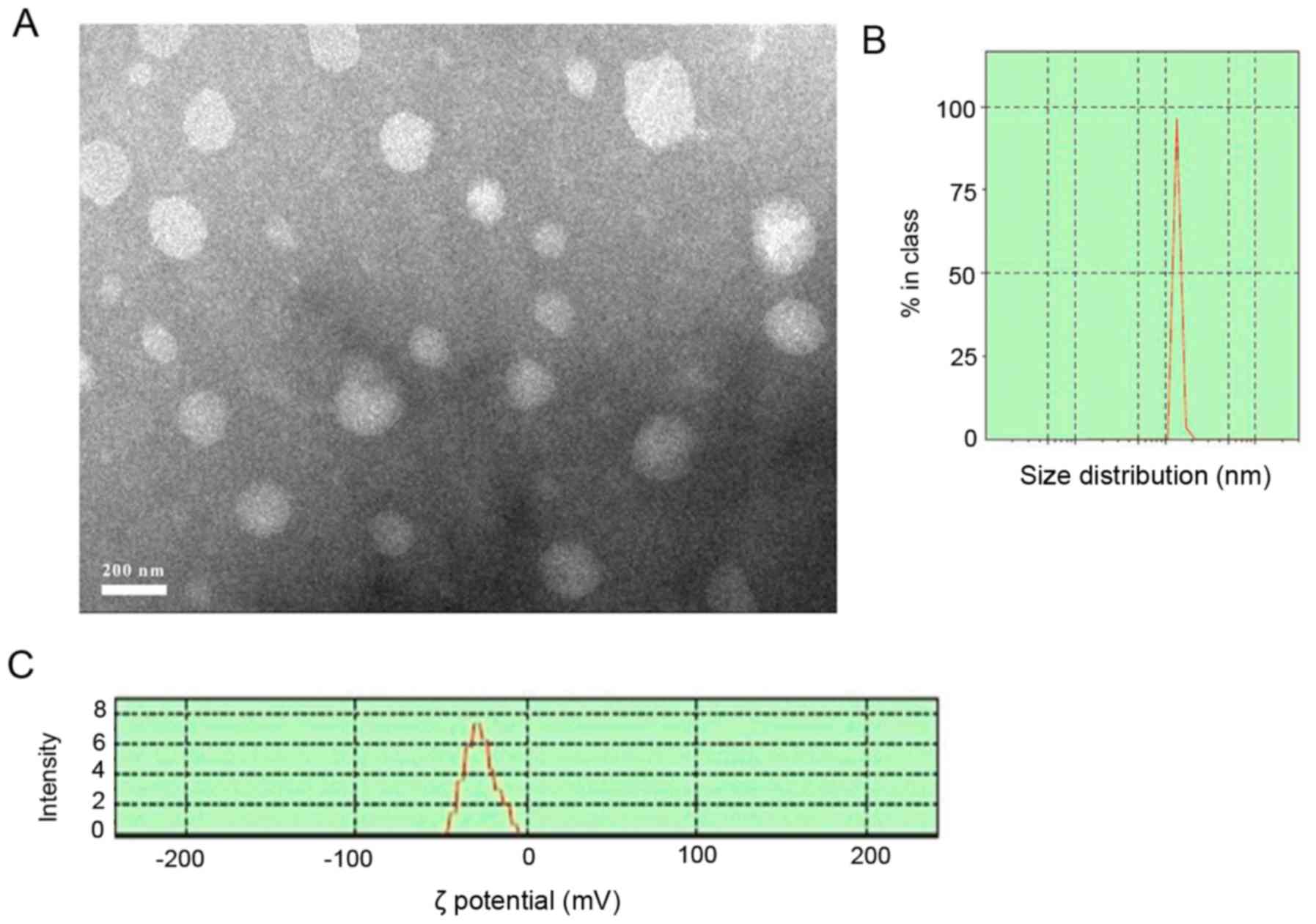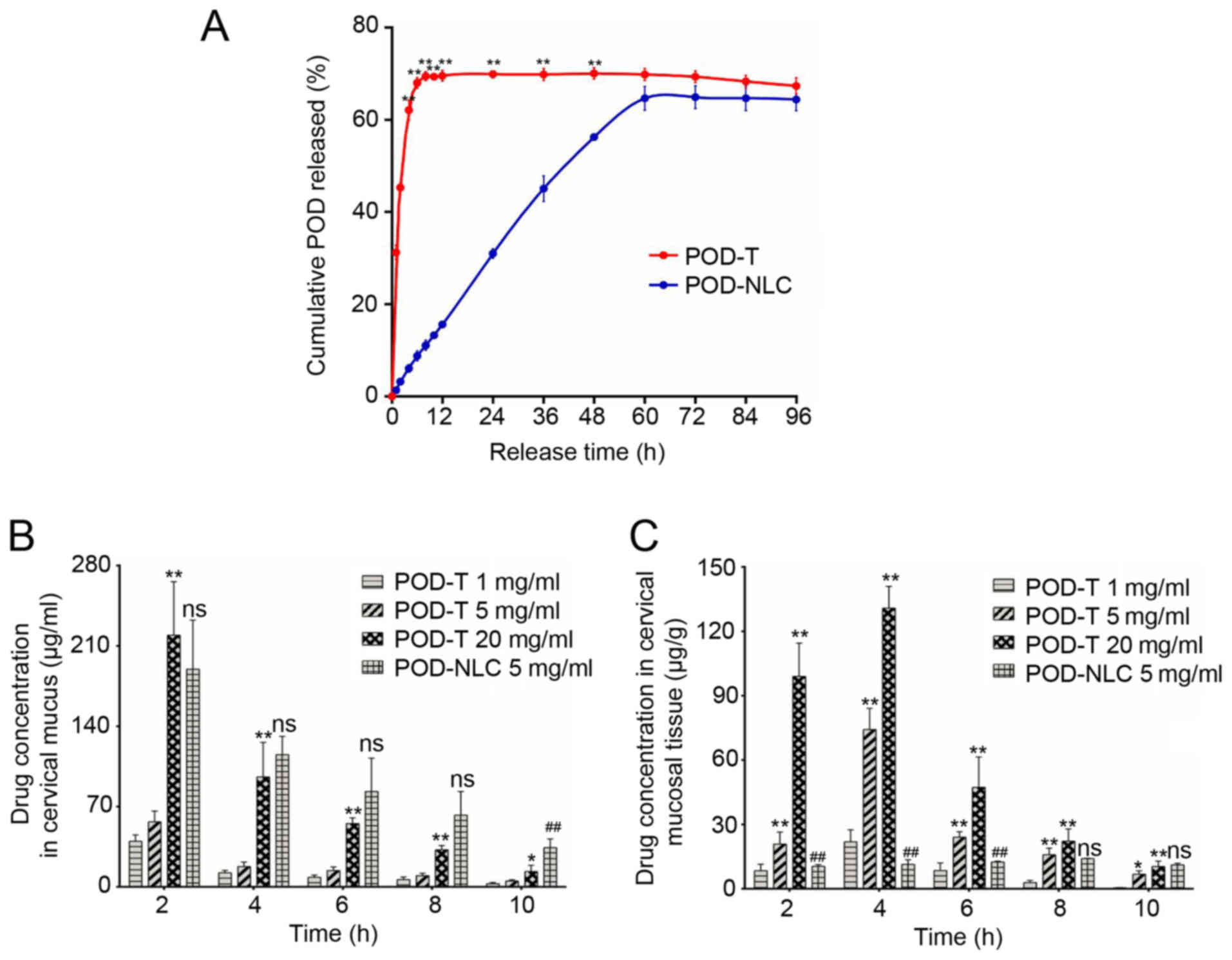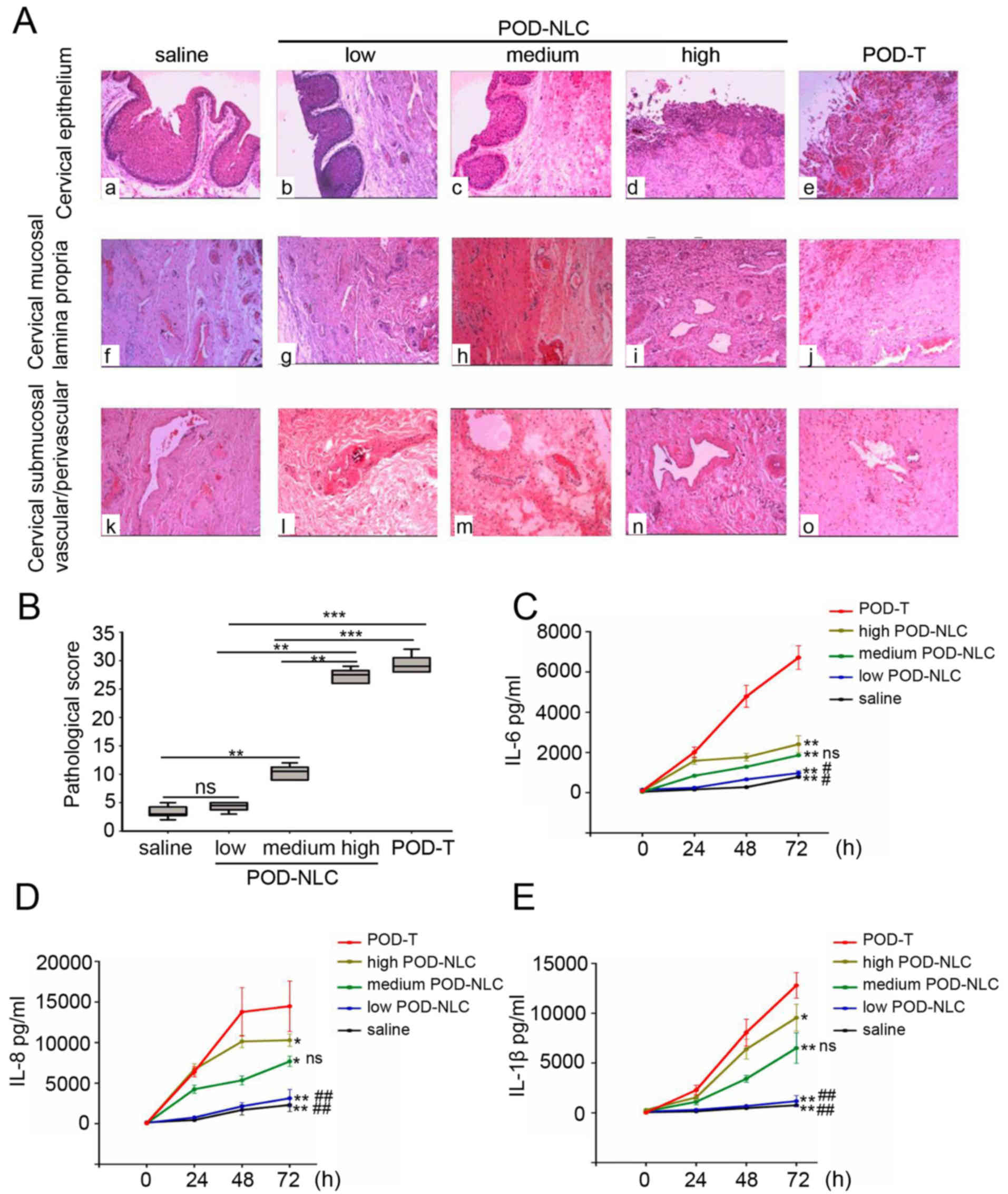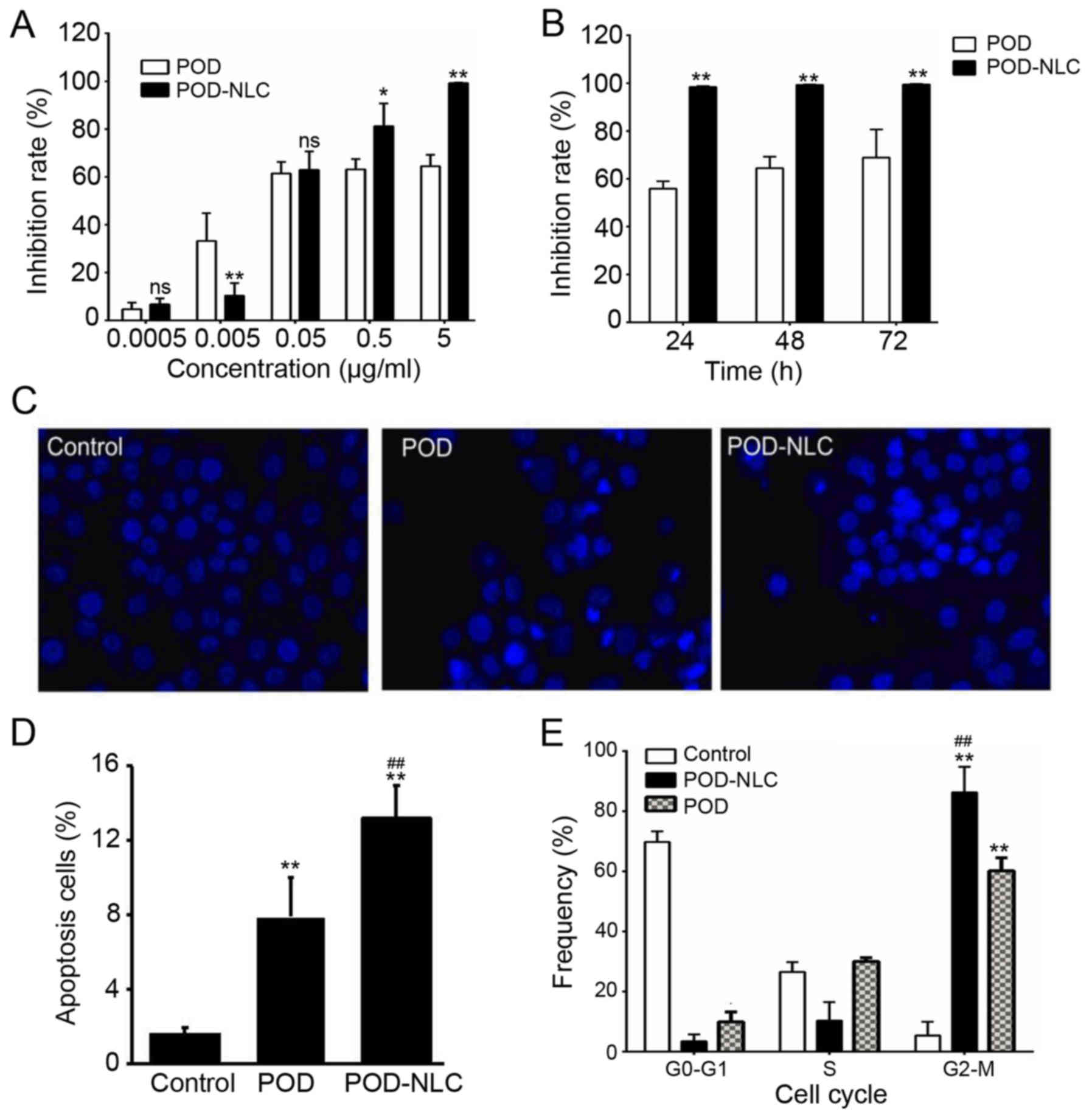|
1
|
Ball SL, Winder DM, Vaughan K, Hanna N,
Levy J, Sterling JC, Stanley MA and Goon PK: Analyses of human
papillomavirus genotypes and viral loads in anogenital warts. J Med
Virol. 83:1345–1350. 2011. View Article : Google Scholar : PubMed/NCBI
|
|
2
|
Park IU, Introcaso C and Dunne EF: Human
papillomavirus and genital warts: A review of the evidence for the
2015 centers for disease control and prevention sexually
transmitted diseases treatment guidelines. Clin Infect Dis. 61
Suppl 8:S849–S855. 2015. View Article : Google Scholar : PubMed/NCBI
|
|
3
|
Lamos C, Mihaljevic C, Aulmann S, Bruckner
T, Domschke C, Wallwiener M, Paringer C, Fluhr H, Schott S, Dinkic
C, et al: Detection of human papillomavirus infection in patients
with vaginal intraepithelial neoplasia. PLoS One. 11:e01673862016.
View Article : Google Scholar : PubMed/NCBI
|
|
4
|
Fu Xi L, Schiffman M, Ke Y, Hughes JP,
Galloway DA, He Z, Hulbert A, Winer RL, Koutsky LA and Kiviat NB:
Type-dependent association between risk of cervical intraepithelial
neoplasia and viral load of oncogenic human papillomavirus types
other than types 16 and 18. Int J Cancer. 140:1747–1756. 2017.
View Article : Google Scholar : PubMed/NCBI
|
|
5
|
Gordaliza M, Garcia PA, del Corral JM,
Castro MA and Gómez-Zurita MA: Podophyllotoxin: Distribution,
sources, applications and new cytotoxic derivatives. Toxicon.
44:441–459. 2004. View Article : Google Scholar : PubMed/NCBI
|
|
6
|
Lacey CJ, Woodhall SC, Wikstrom A and Ross
J: 2012 European guideline for the management of anogenital warts.
J Eur Acad Dermatol Venereol. 27:e263–e270. 2013. View Article : Google Scholar : PubMed/NCBI
|
|
7
|
Karuppaiya P and Tsay HS: Therapeutic
values, chemical constituents and toxicity of Taiwanese Dysosma
pleiantha-a review. Toxicol Lett. 236:90–97. 2015. View Article : Google Scholar : PubMed/NCBI
|
|
8
|
Deng JF, Huang CC and Lee YJ:
Toxicokinetic parameters in the management of poisoning: An example
of podophyllotoxin intoxication. J Toxicol Sci. 23 Suppl
2:S205–S208. 1998. View Article : Google Scholar
|
|
9
|
Karimunnisa S and Atmaram P: Mucoadhesive
nanoliposomal formulation for vaginal delivery of an antifungal.
Drug Dev Ind Pharm. 39:1328–1337. 2013. View Article : Google Scholar : PubMed/NCBI
|
|
10
|
Puglia C, Blasi P, Rizza L, Schoubben A,
Bonina F, Rossi C and Ricci M: Lipid nanoparticles for prolonged
topical delivery: An in vitro and in vivo investigation. Int J
Pharm. 357:295–304. 2008. View Article : Google Scholar : PubMed/NCBI
|
|
11
|
Liu D, Liu Z, Wang L, Zhang C and Zhang N:
Nanostructured lipid carriers as novel carrier for parenteral
delivery of docetaxel. Colloids Surf B Biointerfaces. 85:262–269.
2011. View Article : Google Scholar : PubMed/NCBI
|
|
12
|
Zhao J, Piao X, Shi X, Si A, Zhang Y and
Feng N: Podophyllotoxin-loaded nanostructured lipid carriers for
skin targeting: In vitro and in vivo studies. Molecules. 21:pii:
E1549. 2016. View Article : Google Scholar
|
|
13
|
Rajinikanth PS and Chellian J: Development
and evaluation of nanostructured lipid carrier-based hydrogel for
topical delivery of 5-fluorouracil. Int J Nanomedicine.
11:5067–5077. 2016. View Article : Google Scholar : PubMed/NCBI
|
|
14
|
Zhang S, Wang J and Pan J: Baicalin-loaded
PEGylated lipid nanoparticles: Characterization, pharmacokinetics,
and protective effects on acute myocardial ischemia in rats. Drug
Deliv. 23:3696–3703. 2016. View Article : Google Scholar : PubMed/NCBI
|
|
15
|
Wang Y, Zhao B, Wang S, Liang Q, Cai Y,
Yang F and Li G: Formulation and evaluation of novel glycyrrhizic
acid micelles for transdermal delivery of podophyllotoxin. Drug
Deliv. 23:1623–1635. 2016. View Article : Google Scholar : PubMed/NCBI
|
|
16
|
Owen DH and Katz DF: A vaginal fluid
simulant. Contraception. 59:91–95. 1999. View Article : Google Scholar : PubMed/NCBI
|
|
17
|
Holt JD, Cameron D, Dias N, Holding J,
Muntendam A, Oostebring F, Dreier P, Rohan L and Nuttall J: The
sheep as a model of preclinical safety and pharmacokinetic
evaluations of candidate microbicides. Antimicrob Agents Chemother.
59:3761–3770. 2015. View Article : Google Scholar : PubMed/NCBI
|
|
18
|
Koshiol J, Sklavos M, Wentzensen N, Kemp
T, Schiffman M, Dunn ST, Wang SS, Walker JL, Safaeian M, Zuna RE,
et al: Evaluation of a multiplex panel of immune-related markers in
cervical secretions: A methodologic study. Int J Cancer.
134:411–425. 2014. View Article : Google Scholar : PubMed/NCBI
|
|
19
|
Wang Q, Han K, Li X, Xiao Y and Zeng K:
Role of endoplasmic reticulum stress pathway in podophyllotoxin
nanostructured lipid carriers-induced apoptosis of VK2/E6E7 cells.
Nan Fang Yi Ke Da Xue Xue Bao. 34:832–836. 2014.(In Chinese).
PubMed/NCBI
|
|
20
|
D'Cruz OJ, Erbeck D and Uckun FM: A study
of the potential of the pig as a model for the vaginal irritancy of
benzalkonium chloride in comparison to the nonirritant microbicide
PHI-443 and the spermicide vanadocene dithiocarbamate. Toxicol
Pathol. 33:465–476. 2005. View Article : Google Scholar : PubMed/NCBI
|
|
21
|
Pachman DR, Barton DL, Clayton AC,
McGovern RM, Jefferies JA, Novotny PJ, Sloan JA, Loprinzi CL and
Gostout BS: Randomized clinical trial of imiquimod: An adjunct to
treating cervical dysplasia. Am J Obstet Gynecol. 206:42.e1–7.
2012. View Article : Google Scholar
|
|
22
|
Fichorova RN, Mendonca K, Yamamoto HS,
Murray R, Chandra N and Doncel GF: A quantitative multiplex
nuclease protection assay reveals immunotoxicity gene expression
profiles in the rabbit model for vaginal drug safety evaluation.
Toxicol Appl Pharmacol. 285:198–206. 2015. View Article : Google Scholar : PubMed/NCBI
|
|
23
|
Olerile LD, Liu Y, Zhang B, Wang T, Mu S,
Zhang J, Selotlegeng L and Zhang N: Near-infrared mediated quantum
dots and paclitaxel co-loaded nanostructured lipid carriers for
cancer theragnostic. Colloids Surf B Biointerfaces. 150:121–130.
2017. View Article : Google Scholar : PubMed/NCBI
|
|
24
|
Gutierrez-Xicotencatl L, Salazar-Piña DA,
Pedroza-Saavedra A, Chihu-Amparan L, Rodriguez-Ocampo AN,
Maldonado-Gama M and Esquivel-Guadarrama FR: Humoral immune
response against human papillomavirus as source of biomarkers for
the prediction and detection of cervical cancer. Viral Immunol.
29:83–94. 2016. View Article : Google Scholar : PubMed/NCBI
|
|
25
|
Bestehorn K, Bestehorn M and Fleck E:
Influence of different approaches of aortic valve replacement on
the incidence of post-operative delirium in intermediate risk
patients-a matched pair analysis. Curr Med Res Opin. 31:2157–2163.
2015. View Article : Google Scholar : PubMed/NCBI
|
|
26
|
das Neves J, Araújo F, Andrade F, Amiji M,
Bahia MF and Sarmento B: Biodistribution and pharmacokinetics of
dapivirine-loaded nanoparticles after vaginal delivery in mice.
Pharm Res. 31:1834–1845. 2014. View Article : Google Scholar : PubMed/NCBI
|
|
27
|
Lai SK, O'Hanlon DE, Harrold S, Man ST,
Wang YY, Cone R and Hanes J: Rapid transport of large polymeric
nanoparticles in fresh undiluted human mucus. Proc Natl Acad Sci
USA. 104:pp. 482–1487. 2007;
|
|
28
|
Khutoryanskiy VV: Advances in mucoadhesion
and mucoadhesive polymers. Macromol Biosci. 11:748–764. 2011.
View Article : Google Scholar : PubMed/NCBI
|
|
29
|
Ramineni SK, Dziubla TD, Cunningham LL Jr
and Puleo DA: Local delivery of imiquimod in hamsters using
mucoadhesive films and their residence time in human patients. Oral
Surg Oral Med Oral Pathol Oral Radiol. 118:665–673. 2014.
View Article : Google Scholar : PubMed/NCBI
|
|
30
|
Franasiak JM and Scott RT Jr: Reproductive
tract microbiome in assisted reproductive technologies. Fertil
Steril. 104:1364–1371. 2015. View Article : Google Scholar : PubMed/NCBI
|
|
31
|
Chen H, Chang X, Du D, Liu W, Liu J, Weng
T, Yang Y, Xu H and Yang X: Podophyllotoxin-loaded solid lipid
nanoparticles for epidermal targeting. J Control Release.
110:296–306. 2006. View Article : Google Scholar : PubMed/NCBI
|
|
32
|
Fichorova RN, Bajpai M, Chandra N, Hsiu
JG, Spangler M, Ratnam V and Doncel GF: Interleukin (IL)-1, IL-6,
and IL-8 predict mucosal toxicity of vaginal microbicidal
contraceptives. Biol Reprod. 71:761–769. 2004. View Article : Google Scholar : PubMed/NCBI
|
|
33
|
Iwata T, Fujii T, Morii K, Saito M,
Sugiyama J, Nishio H, Morisada T, Tanaka K, Yaguchi T, Kawakami Y
and Aoki D: Cytokine profile in cervical mucosa of Japanese
patients with cervical intraepithelial neoplasia. Int J Clin Oncol.
20:126–133. 2015. View Article : Google Scholar : PubMed/NCBI
|
|
34
|
Passmore JA, Jaspan HB and Masson L:
Genital inflammation, immune activation and risk of sexual HIV
acquisition. Curr Opin HIV AIDS. 11:156–162. 2016. View Article : Google Scholar : PubMed/NCBI
|
|
35
|
Ghate VM, Lewis SA, Prabhu P, Dubey A and
Patel N: Nanostructured lipid carriers for the topical delivery of
tretinoin. Eur J Pharm Biopharm. 108:253–261. 2016. View Article : Google Scholar : PubMed/NCBI
|
|
36
|
von Krogh G: Podophyllotoxin in serum:
Absorption subsequent to three-day repeated applications of a 0.5%
ethanolic preparation on condylomata acuminata. Sex Transm Dis.
9:26–33. 1982. View Article : Google Scholar : PubMed/NCBI
|
|
37
|
Peuster M, Fink C, Reckers J, Beerbaum P
and von Schnakenburg C: Assessment of subacute inflammatory and
proliferative response to coronary stenting in a porcine model by
local gene expression studies and histomorphometry. Biomaterials.
25:957–963. 2004. View Article : Google Scholar : PubMed/NCBI
|
|
38
|
Sakurai H, Miki T, Imakura Y, Shibuya M
and Lee KH: Metal- and photo-induced cleavage of DNA by
podophyllotoxin, etoposide, and their related compounds. Mol
Pharmacol. 40:965–973. 1991.PubMed/NCBI
|













